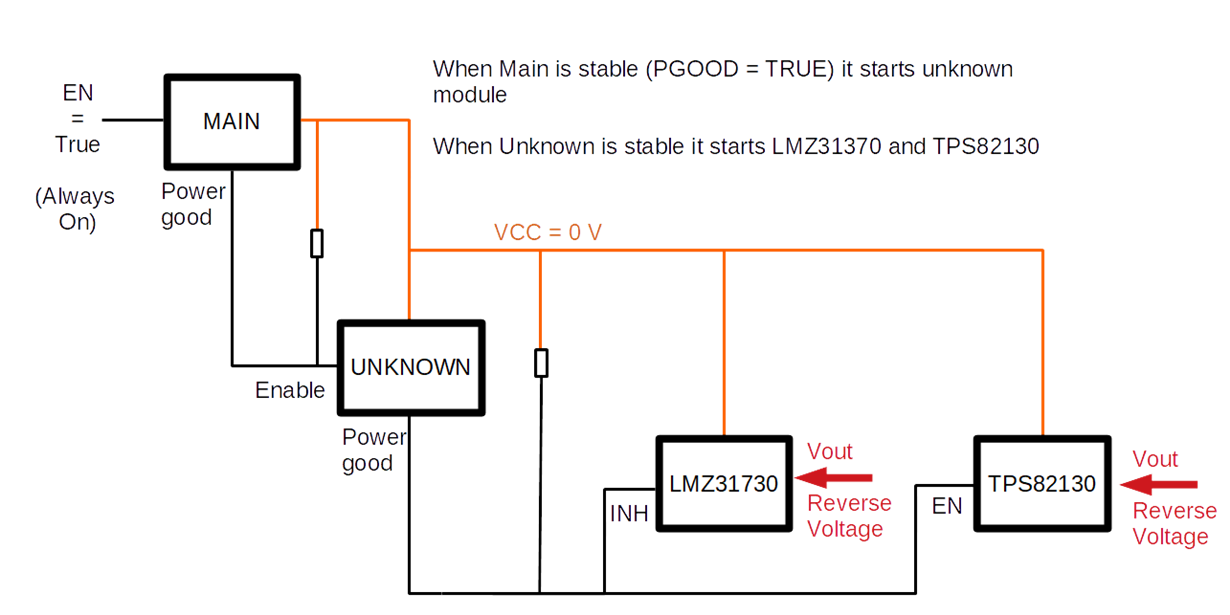Other Parts Discussed in Thread: LMZ31710
Hello everybody,
we are designing a system including TPS82130 and LMZ31710 SMPS.
In the final product it is possible that the external sources inject small currents (< 50 mA) into the powered net.
Some regulators can take damage from this due to the voltage difference between input and output.
Also a charging current to the regulator input power net and its capacitors can also cause damage.
I guess the latter is unlikely due to the low current of < 50 mA.
The datasheets of TPS82130 and LMZ31710 have no clear statement concerning these situations. In datasheets for linear regulators one can sometimes find the advice to add a diode between output and input to shunt this reverse current.
So my question is:
What is the expected result of injecting max. 3.3 V and 50 mA to the output of a TPS82130 or LMZ31710 when they have no power source at their inputs?


